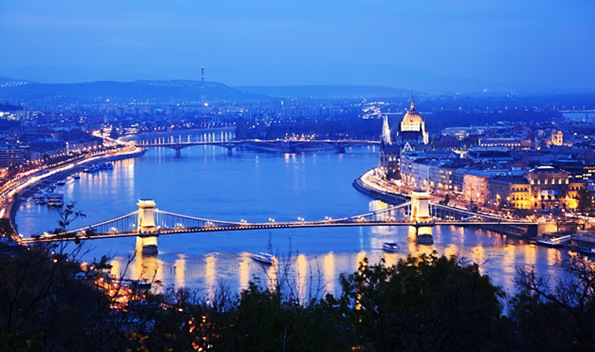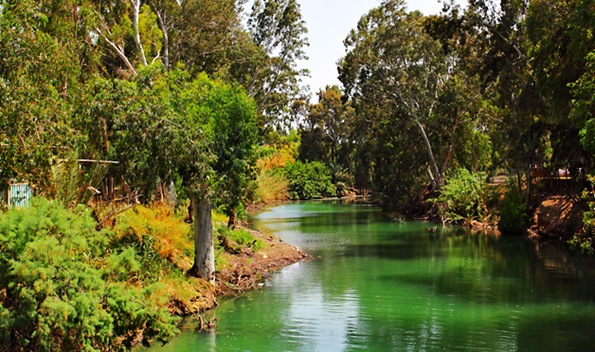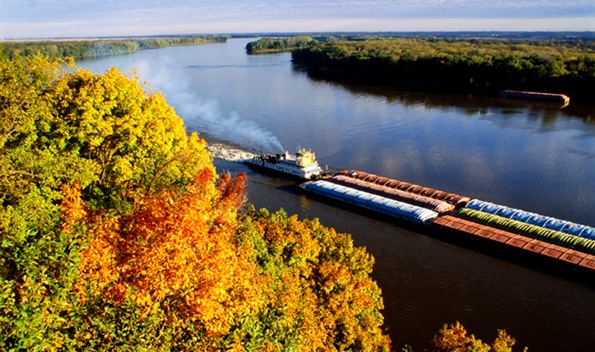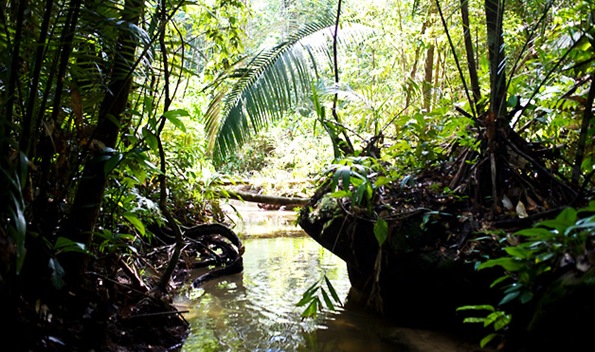Wednesday, February 29, 2012
Mountains in Solar
Mountains In The Solar System
Rising sharply from a narrow summit area, these majestic mountains stand prominently above their surroundings. However, many amongst us have yet to learn the difference between the tallest and the highest mountains. Although, it sounds the same and we often confuse the two but there is a difference. The tallest mountains have the measures from the base of the mountain to its peak, whereas the highest mountains have the measures from the sea level to the peak. See the difference?
Looking our planet, into the solar system there are many mountains, peaks and ridges way taller than the mountains on the planet Earth. These extraterrestrial mountains may be a result of crater impact, high volcanic activity etc., none of which we would want happening in our home planet.
10. Makalu
The fifth highest mountain in the world above sea level at an altitude of 8,481 m above sea level and located at the Nepal-China border. The Makalu has a unique shape of a four sided pyramid and lies only 19 km southeast of Mount Everest. The first attempts to climb the mountain began in 1954. However, the first successful ascent of the summit was made in 1955 during a French expedition by Lionel Terray and Jean Couzy.
9. Lhotse
At 8,516 m above sea level, Lhotse is situated at the borders of China and Nepal and is connected to the Everest through the southern mountain pass. The south face of Lhotse has seen many failed attempts, fatalities with a very few successful ascents. The main summit of Lhotse was first climbed in 1956 by a Swiss team of Ernst Reiss and Fritz Luchsinger. However, the summit of Lhotse Middle remained the highest unclimbed point on Earth, until 2001 when a Russian Expedition finally made a first ascent.
8. Kangchenjunga
The third highest mountain of the world at 8,586 m above sea level, Kangchenjunga is located at the India-Nepal border in the Himalayan Range. The five peaks are collectively called the Kangchenjunga meaning “The Five Treasures of Snows”. The earliest attempts of reaching the summit started in 1848 and it was not until 1955 that Joe Brown and George Band made the first ascent. The landscape of Kangchenjunga is shared by four countries namely China, India, Nepal and Bhutan.
7. K-2
The second highest mountain in the world, K-2 or Godwin Austin has a peak elevation of 8,611 m above sea level and lies at the northwest of the Karakoram Range. Known as the savage mountain due its high fatality rate; K-2 is situated at the border of China and Pakistan. Since it is almost impossible to climb the K-2 from China, it is majorly climbed from Pakistan. K-2 was named by Thomas Montgomerie, while he surveyed the Karakoram and labeled its prominent peaks as K-1, K-2, K-3, K-4 and K-5. The earliest attempts to climb the savage mountain began in 1902 and the first successful ascent was finally made in 1954 by Lino Lacedelli and Achille Compagnoni in an Italian Expedition. One interesting fact about K-2 is that no one has ever attempted to climb the summit during the winter season.
6. Mount Everest
The world’s highest mountain rises in the eastern Himalayas between Nepal and Tibet. A young limestone mountain not yet worn by erosion, it has two peaks, one of which reaches a height of 8,848 m. Everest is covered in snow except for its bare, gale-swept summits. Many glaciers feed rivers that rise near the Everest base. The mountain got its name in 1865, in the honor of Sir George Everest, the British surveyor general of India who established the location and the approximate altitude of the mountain. Its Tibetan name Chomolungma means “goddess mother of the world”.
Climbing attempts began in the early 1920s, and several expeditions came within 300 m of the top. Success came with the development of special equipment to cope with the low oxygen supply, high winds and extreme cold. On May 29, 1953, Edmund Hillary of New Zealand and Tenzing Norgay, a Nepalese Sherpa tribseman became the first successful climbers of the Everest.
5. Mauna Kea
The tallest mountain in the world, Mauna Kea is a large dormant volcano located on the north central Hawaii Island, about 43 km northwest of Hilo. Measuring 4,205 m high above sea level, Mauna Kea extends an additional 5,547 km to the ocean floor. Thus, from base to peak it is the tallest individual mountain in the world. The Mauna Kea was last active more than 4,000 years ago; its snow covered cone is used for skiing and is also the site of the Mauna Kea Observatory, the highest astronomical observatory in the world. The mountain’s upper slopes have caves where ancient Hawaiians dug basalt for tools. The lower slopes support large cattle ranches and coffee plantations. The mountain is regarded in the Hawaiian legend as the home of the goddess Poliahu, the fire goddess of Mauna Kea.
4. Maxwell Montes
Rising to a height of 11,000 m, Maxwell Montes is the highest point on the surface of planet Venus. Located on the northern highlands of Ishtar Terra, the origin of the mountain belt is controversial with several suggesting its formation. The Maxwell Montes was discovered in 1967 by scientists at the American Arecibo Radio Telescope in Puerto Rico. The mountain is named after the mathematician and physician James Clerk Maxwell, whose works in radio waves made the radar and ultimately resulted in the exploration of the surface of planet Venus.
3. Boösaule Montes
Boösaule Montes is known to be the tallest non-volcanic mountain of the Solar System. It is located at Io, the fourth largest satellite of the Solar System and innermost satellite of the planet Jupiter. The geology of Io is quite interesting as it contains about 400 active volcanoes and contains over 150 mountains on its surface. The Boösaule Montes is one such mountain that lies on the northwest of the large Pele plume deposit and reaches an elevation of 17,500 m. The mountain got its name from a cave in the Greek Mythology where Epaphus, son of Zeus, was born.
2. Equatorial Ridge
Located on the dark hemisphere of the third largest satellite, Iapetus, of the planet Saturn, the Equatorial Ridge runs along the center of the hemisphere with some isolated peaks as high as 20 km. The Equatorial Ridge was discovered by Cassini spacecraft on December 31, 2004. The formation of the ridge is still debated upon; however, it is agreed that the ridge is ancient as it is heavily cratered. The prominent bulge of the ridge gives Iapetus a walnut like shape.
1. Olympus Mons
So far the tallest mountain discovered in our Solar System, Olympus Mons stands 24 km above a smooth plain on the planet Mars. Approximately three times taller than the Mount Everest, Olympus Mons was discovered by the US space probe, Mariner 9, in 1971 when it sent pictures of four immense volcanic mountains. The tallest of these shield volcanoes, Mons Olympus, dwarfs the largest such feature on the Earth, The Mauna Kea. The extraordinary height of the Olympus Mons owes to the absence of mobile tectonic plates, allowing the mountain to remain fixed on a stationary hotspot and continues discharging lava till the mountain reaches a considerable height. The base of the mountain pushes down 2km deep into the crust each year, owing to the enormous weight pressing down the Martian crust
Volcano
5 Most Devastating Underwater Volcanoes
Underwater volcanoes also known as Submarine volcanoes are found under ocean and can generally eject into air after eruption. Underwater volcanoes are formed when molten rocks erupts underwater fissures of planet earth. They are usually found near the areas of tectonic plate movement. Many underwater volcanoes have caused chaos by eruption or earthquake by destroying various places nearby leaving many homeless.
1. Coast of Tonga
Hunga Tonga is located about 30km from Falcon Island. Volcano lies about 65 miles above a very seismic zone. Many underwater volcano have been erupted here first ever volcano erupted here was in 1912 This volcano was erupted on march 18, 2009 caused due to the melting of two tectonic plates using excessive amount of heat and pressure resulting in the big eruption. Volcano extends from New Zealand to north-east to Fiji.
2. Loihi Volcano, Hawaii
Loihi is an undersea mountain located in south-west of High Island in Hawaii rising approximately 3000meters above the Pacific Ocean. It is also knows as youngest volcano. Loihi was first discovered in 1970 but scientists claimed it to be a normal seamount, but Loihi proved to be an active volcano later in 1996 where first eruption took place. And since then small earthquakes has been hitting all over due to the volcanic eruption. Scientists strongly believe that it can break the surface anytime from 10 to 10,000 years.
3. Eldfell Volcano, Iceland
Eldfell is located over 600 feet high on Heimaey Island, Iceland. Many volcanic eruptions has been occurred here because it is located over mid Atlantic ridge, where north American and Eurasian are moving apart over Iceland hotspot causing many volcanic eruptions. First ever volcanic eruption took place in January 1973 in the Icelandic town of Vestmannaeyjer. Eruption took place at a sudden without alarming people of this town. It destroyed entire town and Heimaey Island was immediately evacuated.
4. Yasur Volcano, Vanuatu
Yasur volcano is located in Tannu Island, Vanuatu The first ever eruption discovered here was in 1774. Yasur is Vanuatu’s most active volcanoes. Its has been erupting frequently for the past 800 years. Eruption starts with a strong shockwave distributing huge clouds of smokes everywhere. Then there is a huge explosion of molten chock of rocks. During the daytime they are dark and gray but during the night they are surrounded by orange color.
5. Sumatra, Indonesia
Sumatra is an Island located in Western Indonesia. It is the largest island in the Indonesia and worlds sixth largest Island in the world. Sumatra is formed by long chain of mountains and it is 4,600 meters tall and covers base of 50kms in diameter below the surface of the ocean. There are about 90 volcanoes in this range and 15 of them are active. The underwater earthquake appeared here was the main responsible of tsunami that affected and rocked the Asia in 2004.
Rivers around the world
7 Extraordinary Rivers Around the World
Irrigating crops, producing electricity, acting as roadways for trade and travel, and even offering a sacred place for worship, rivers are the epicenter around which much of humanity lives and thrives. From the Nile in Africa, which played a vital role in the development of the Western world, to the Ganges in India, considered by Hindus to be the holiest of all rivers, here are 7 of the most important natural waterways on the planet.
Amazon, South America
Beginning in Brazil and traveling through Peru, Ecuador, Bolivia and Venezuela before emptying into the Atlantic Ocean, the Amazon is perhaps the most record-breaking river in the world. It is the largest (2.7 million sq. miles), the widest (202 miles wide at its mouth; 6.8 miles wide along its path) and among the longest (4,000 miles) and deepest (300 feet in some spots). It is also called the "Ocean River" because it boasts the greatest total discharge of all rivers—between 9 million and 32 million gallons per second—which is 20 percent of the world's freshwater ocean discharge.
Caño Cristales, South America
 Photo: Fredy Gómez
Photo: Fredy Gómez
Starting in the Andean foothills of the Amazon rainforest in Colombia, the "river that ran away from paradise" is generally regarded as the most beautiful in the world due to its brief seasonal blooming of colorful bottom-feeding algae. In full glory during late October and early November when the water level is just right, vibrant blotches of reds, oranges, yellows, greens and blues paint its water—turning the surface into a virtual rainbow.
Danube River, Europe
 Photo: Gil Azouri/Getty Images
Photo: Gil Azouri/Getty Images
At 1,770 miles long, the Danube is the second longest river in Europe after the Volga. But unlike the Volga, which only runs through Russia, the Danube snakes through Germany, Austria, Hungary, Croatia, Serbia, Bulgaria, Moldova, Romania and the Ukraine before emptying into the Black Sea. Vital to the settlement and political evolution of central and southeastern Europe, the Danube's banks are lined with castles and fortresses as it was the boundary between so many great empires. Today the lower portion of the Danube is a major avenue for freight transport, while the upper Danube is an important source of hydroelectricity.
Ganges, South Asia
 Photo: Robert Harding/Getty Images
Photo: Robert Harding/Getty Images
Hindus believe the Ganges River is the earthly manifestation of the Goddess Ganga, and they worship it as the holiest of all rivers. Beginning in the southern Himalayas, the 1,560-mile river flows through China, India, Nepal and Bangladesh before emptying into the Indian Ocean. Many of the practicing Hindus who populate the 52 cities and 48 towns along its banks believe in the river's ability to cleanse them of their sins and liberate them from the cycle of life and death. Pilgrimage sites are particularly significant, attracting hundreds of thousands of worshippers each year, and some people cast the ashes of their dead into the river, believing it will guide the souls of the deceased straight to paradise.
Jordan, Southwest Asia
 Photo: Shutterstock.com
Photo: Shutterstock.com
The Jordan River is both the Biblical and historical epicenter of the Judeo-Christian world. Not only is it where Jesus Christ was baptized by John, but it is also believed to be the scene of a number of miracles, including the crossing from Egypt to Canaan, and Biblical wars, such as the battle between Jonathan and Bacchides. Though part of the river's upper portion is still used for baptisms today, much of it is considered endangered due to domestic and agricultural use.
Mississippi, North America
 Photo: Kevin Horan/Getty Images
Photo: Kevin Horan/Getty Images
The Mississippi River is the largest river system in North America—so large, in fact, that it runs through 10 U.S. states and is divided into two main parts: the Upper Mississippi (from its source in Northern Minnesota to where it meets the Ohio River at the southern tip of Illinois) and the Lower Mississippi (from the Ohio River to the Gulf of Mexico). A major navigational route and settlement hub since the Native Americans settled there, the Mississippi River has been immortalized in American culture in everything from books like Mark Twain's The Adventures of Huckleberry Finn to the rhythm and blues music of the Mississippi Delta.
Nile, Africa
 Photo: Peter Adams/Getty Images
Photo: Peter Adams/Getty Images
At 4,132 miles long, the Nile is the longest river in the world. It also happens to be one of the most iconic. Flowing north through the deserts of Uganda and Egypt, it has been the lifeline of Egypt since the Stone Age, and, to this day, the vast majority of the Egyptian population is settled along its path. It is also one of the main routes of shipping traffic. In fact, the winter winds are so strong that ships can travel against the current using just a sail.
Amazon, South America
Caño Cristales, South America
 Photo: Fredy Gómez
Photo: Fredy GómezStarting in the Andean foothills of the Amazon rainforest in Colombia, the "river that ran away from paradise" is generally regarded as the most beautiful in the world due to its brief seasonal blooming of colorful bottom-feeding algae. In full glory during late October and early November when the water level is just right, vibrant blotches of reds, oranges, yellows, greens and blues paint its water—turning the surface into a virtual rainbow.
Danube River, Europe
 Photo: Gil Azouri/Getty Images
Photo: Gil Azouri/Getty ImagesGanges, South Asia
 Photo: Robert Harding/Getty Images
Photo: Robert Harding/Getty ImagesHindus believe the Ganges River is the earthly manifestation of the Goddess Ganga, and they worship it as the holiest of all rivers. Beginning in the southern Himalayas, the 1,560-mile river flows through China, India, Nepal and Bangladesh before emptying into the Indian Ocean. Many of the practicing Hindus who populate the 52 cities and 48 towns along its banks believe in the river's ability to cleanse them of their sins and liberate them from the cycle of life and death. Pilgrimage sites are particularly significant, attracting hundreds of thousands of worshippers each year, and some people cast the ashes of their dead into the river, believing it will guide the souls of the deceased straight to paradise.
Jordan, Southwest Asia
 Photo: Shutterstock.com
Photo: Shutterstock.comThe Jordan River is both the Biblical and historical epicenter of the Judeo-Christian world. Not only is it where Jesus Christ was baptized by John, but it is also believed to be the scene of a number of miracles, including the crossing from Egypt to Canaan, and Biblical wars, such as the battle between Jonathan and Bacchides. Though part of the river's upper portion is still used for baptisms today, much of it is considered endangered due to domestic and agricultural use.
Mississippi, North America
 Photo: Kevin Horan/Getty Images
Photo: Kevin Horan/Getty ImagesThe Mississippi River is the largest river system in North America—so large, in fact, that it runs through 10 U.S. states and is divided into two main parts: the Upper Mississippi (from its source in Northern Minnesota to where it meets the Ohio River at the southern tip of Illinois) and the Lower Mississippi (from the Ohio River to the Gulf of Mexico). A major navigational route and settlement hub since the Native Americans settled there, the Mississippi River has been immortalized in American culture in everything from books like Mark Twain's The Adventures of Huckleberry Finn to the rhythm and blues music of the Mississippi Delta.
Nile, Africa
 Photo: Peter Adams/Getty Images
Photo: Peter Adams/Getty ImagesAt 4,132 miles long, the Nile is the longest river in the world. It also happens to be one of the most iconic. Flowing north through the deserts of Uganda and Egypt, it has been the lifeline of Egypt since the Stone Age, and, to this day, the vast majority of the Egyptian population is settled along its path. It is also one of the main routes of shipping traffic. In fact, the winter winds are so strong that ships can travel against the current using just a sail.
Tuesday, February 28, 2012
Subscribe to:
Posts (Atom)













